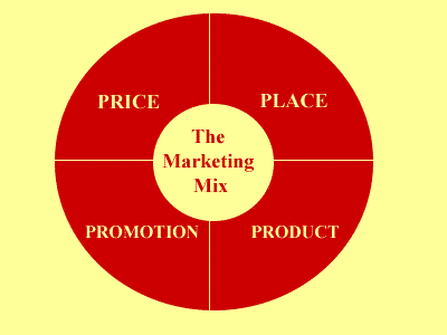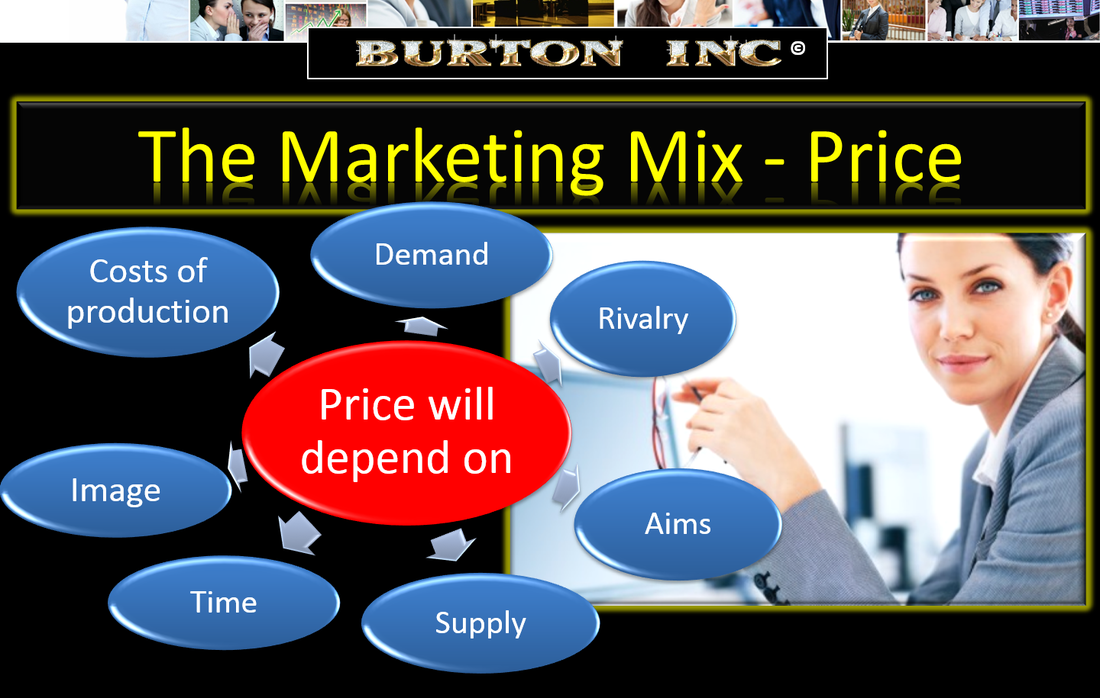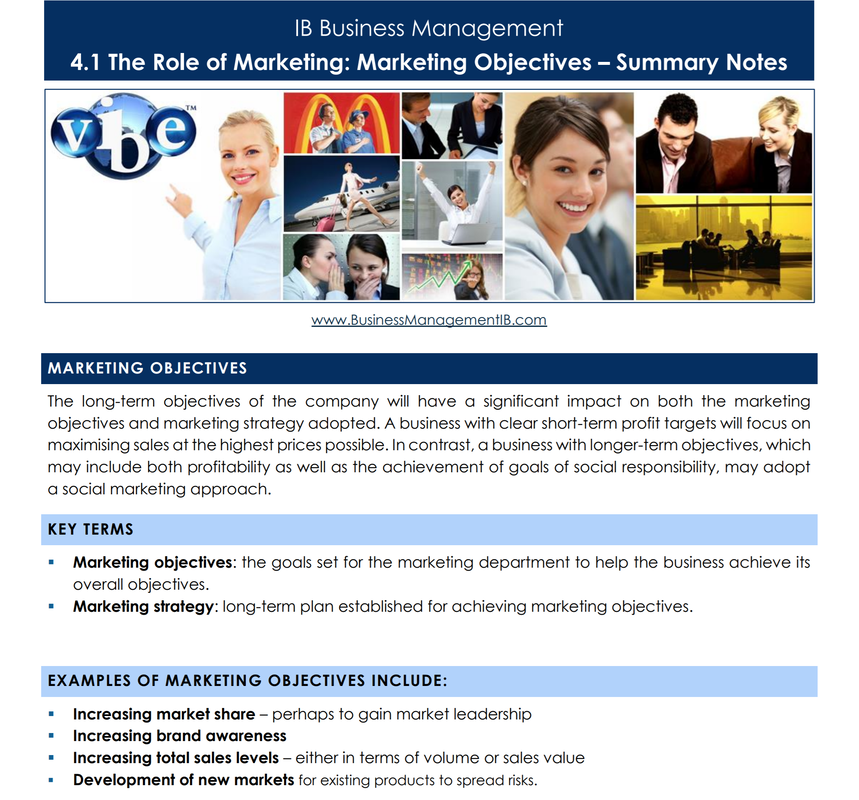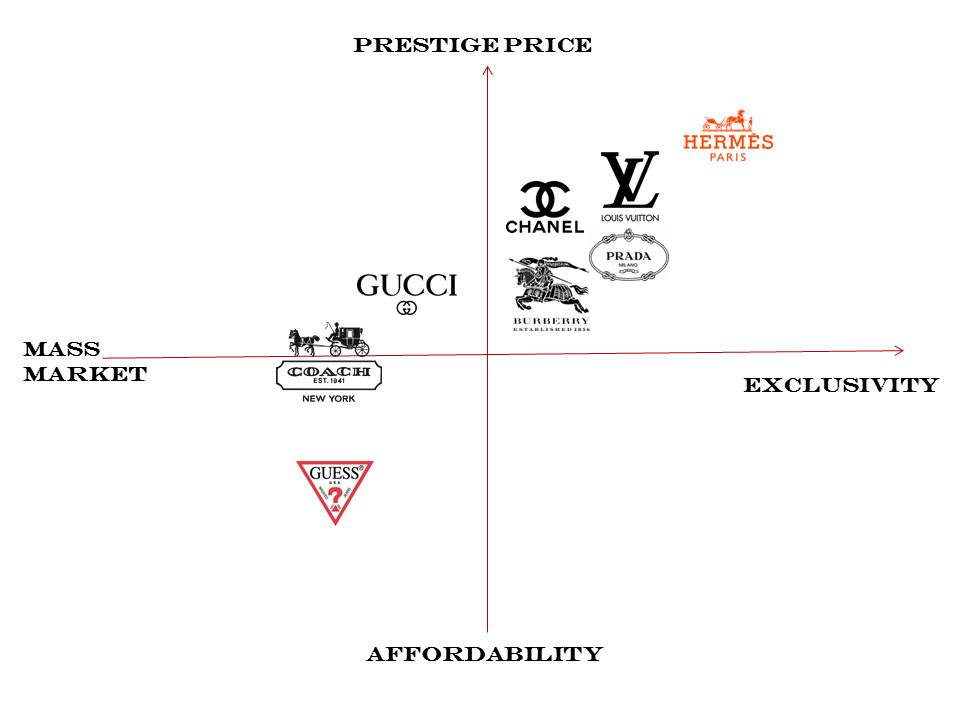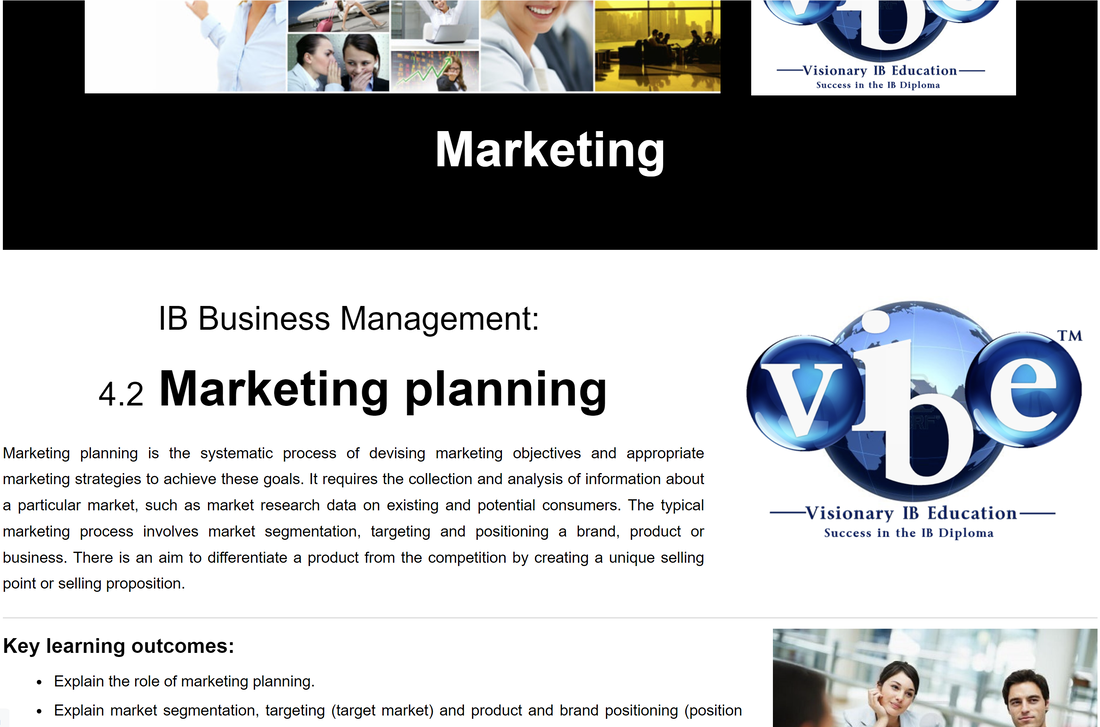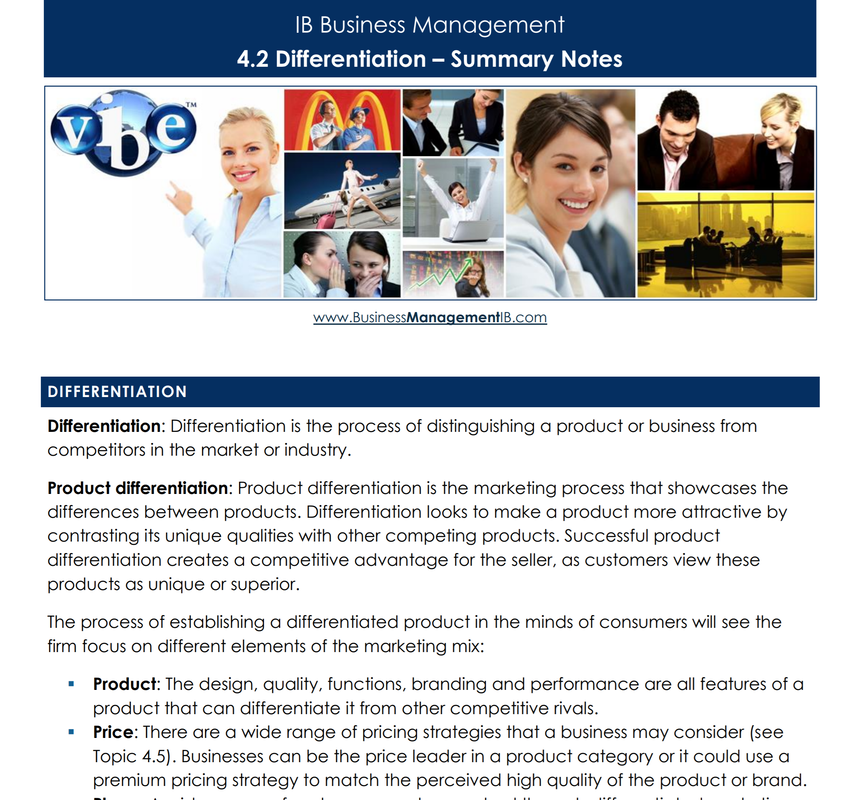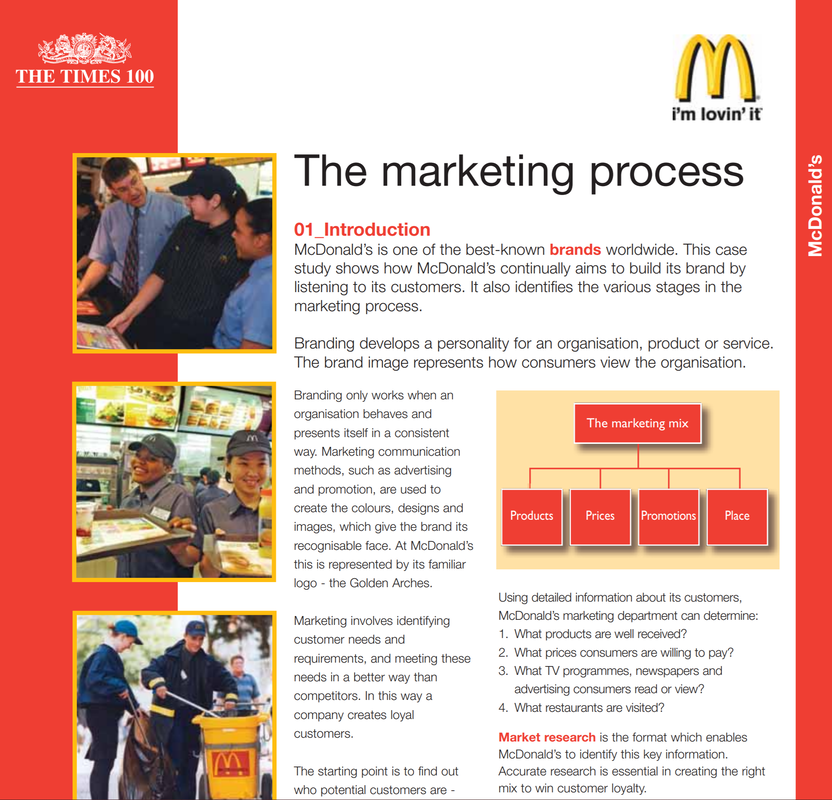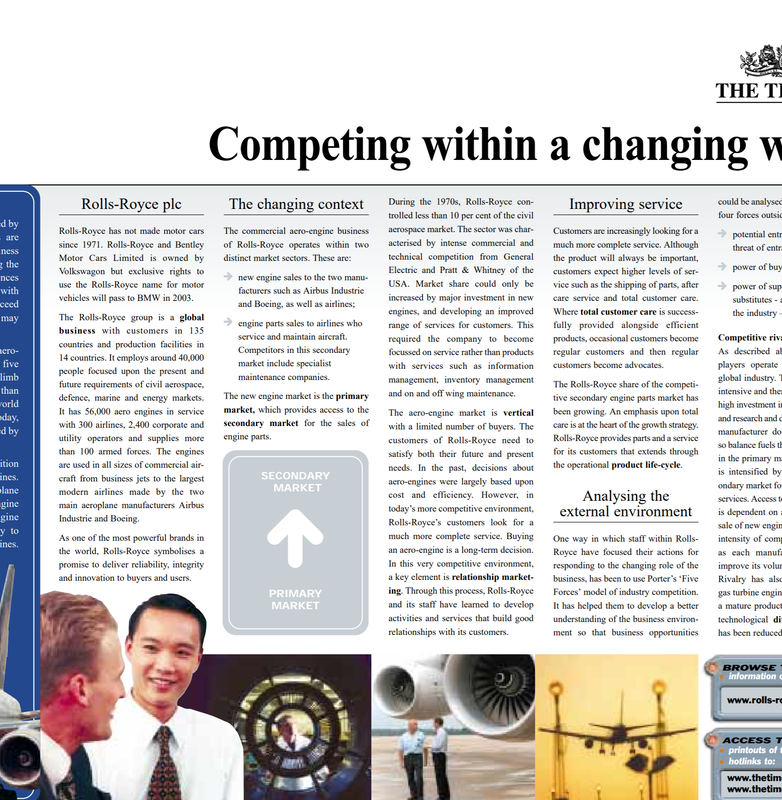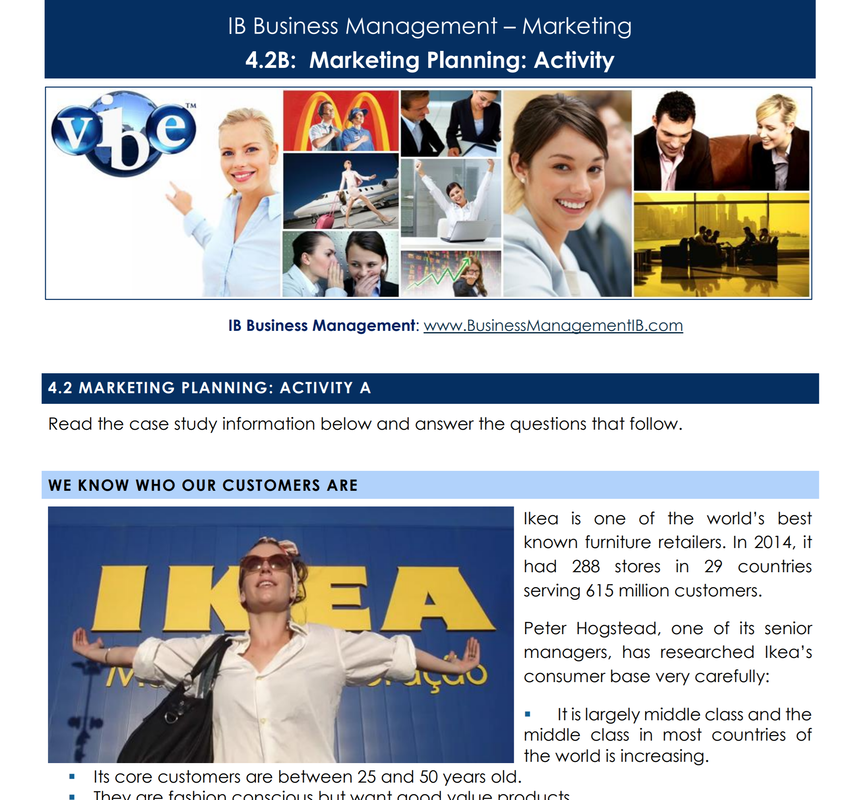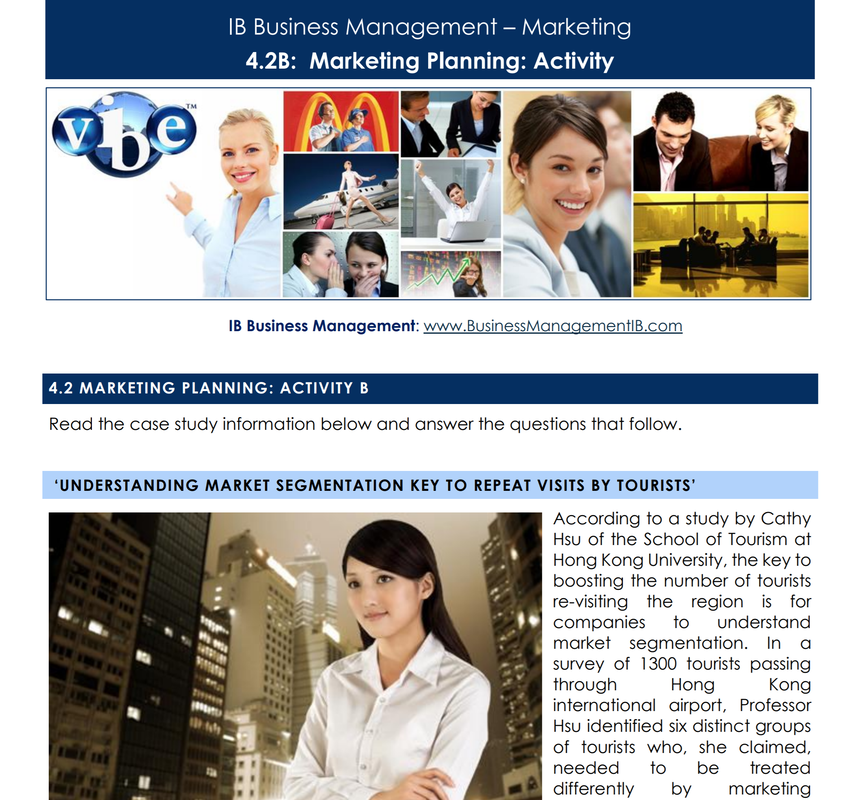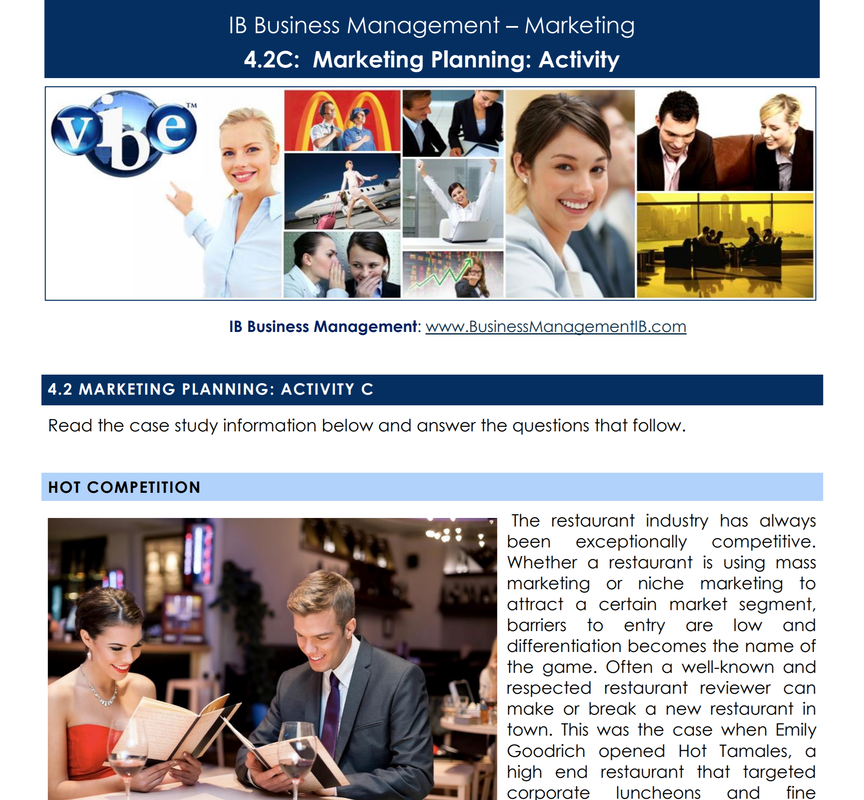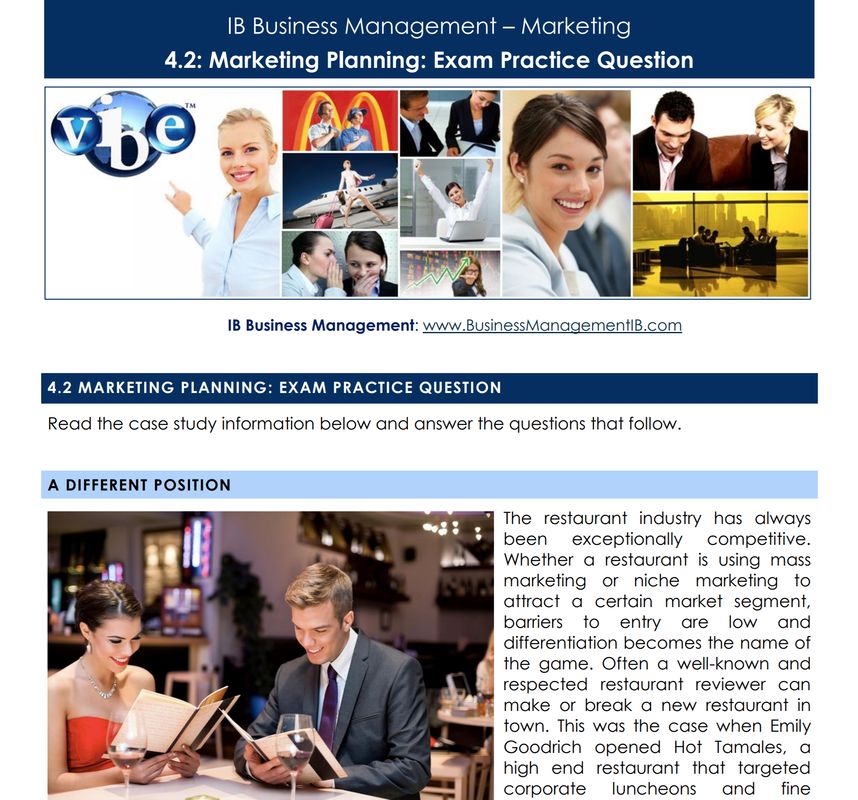IB BUsiness MAnagement:
|
|
Key Learning Outcomes:
|
Marketing PlanningMarketing planning: The process of formulating appropriate strategies and preparing marketing activities to meet marketing objectives.
The Marketing Mix - SIVAMarketing planning begins with market research to determine PRODUCT (Solution), PROMOTION (Information),
PRICE (Value) and PLACE (Access). S.I.V.A. The marketing mix is made up of seven interrelated decisions − the 7Ps. The four key ones are product, price, promotion (including advertising and packaging) and place (where and how a product will be sold to consumers).
The other 3Ps largely relate to marketing services – people, process and physical evidence. The Marketing Mix:
|
The Marketing PlanA marketing plan is often a formal written document which outlines in detail how the business unit intends to achieve the marketing objectives derived from the corporate objectives.
Effective market planning is nearly always based on clear awareness of market trends, competitors’ actions and consumer wants so market research is vital. The plan will then contain detailed action programmes, budgets, sales forecasts and strategies – and these strategies will be based on adaptations of the firm’s marketing mix. Marketing mix: The key decisions that must be taken in the effective marketing of a product.
Not all of the 7Ps have the same degree of significance in every case. It is vital that these elements fit together into a coherent and integrated plan. An appropriate marketing mix will ensure that these marketing decisions are interrelated. They must be carefully coordinated to make sure that customers are not confused by conflicting messages being given about the good or service being sold.
Coordinated marketing mix: Key marketing decisions complement each other and work together to give customers a consistent message about the product. If just one part of the marketing is inconsistent or does not integrate with the rest, it may lead to the failure of even the best marketing plan. The most appropriate marketing mix decisions will therefore be:
The Marketing Mix explainedMind Map: Marketing Mix |
Marketing ObjectivesMarketing objectives: the goals set for the marketing department to help the business achieve its overall objectives.
Marketing strategy: A marketing strategy is a long-term plan established for achieving marketing objectives. Marketing Objectives
|
Marketing SegmentationMarket segmentation: The process of splitting a market into distinct groups of buyers in order to better meet their needs.
The main methods of market segmentation are based on demographic, geographic and psychographic factors. Market Segmentation
|
Niche marketingNiche marketing: Niche marketing targets specific and well-defined market segments (i.e., niche markets). Concentrating all marketing efforts on a small but specific and well defined segment of the population.
Niches do not 'exist' but are 'created' by identifying needs, wants, and requirements that are being addressed poorly or not at all by other firms, and developing and delivering goods or services to satisfy them. As a strategy, niche marketing is aimed at being a big fish in a small pond instead of being a small fish in a big pond. |
Mass MarketingMass marketing: Mass marketing is an attempt to appeal to an entire market with one basic marketing strategy using mass distribution and mass media.
It is also called undifferentiated marketing because this is a strategy that ignores targeting individual market segments. Different market segments are targeted with the same blanket approach (for example, a television promotion will reach many different market segments), usually to maximise sales volume. Most businesses have various targeting strategies, often combining mas and niche marketing strategies. |
Advantages and limitations of niche and mass MarketingThe PARADOX of choice |
DifferentiationDifferentiation: Differentiation is the process of distinguishing a product or
business from competitors in the market or industry.
Product differentiation: Product differentiation is the marketing process that showcases the differences between products. Differentiation looks to make a product more attractive by contrasting its unique qualities with other competing products. Successful product differentiation creates a competitive advantage for the seller, as customers view these products as unique or superior. Differentiation - summary notes |
Good marketing planning!If you have conducted really effective market, and used that market research to make informed strategic decisions surrounding the marketing mix, you may just be on to a winner!
|
The marketing plan explainedCrafting a strategic marketing plan for your company helps you set and achieve realistic business goals, while enabling your team adapt to changes in the market and enjoy the benefits of their hard work.
|
The Marketing 4.2 Marketing Planning:
Summary PowerPoint notes
Progress check - test your understanding by completing the activities below
You have below, a range of practice activities, flash cards, exam practice questions and and an online interactive self test to ensure you have complete mastery of the IB Business Management requirements for the Marketing 4.2 MARKETING PLANNING section.
IB BUSINESS MANAGEMENT QUIZZES AND TWO CLASSROOM GAMES
Test how well you know the IB Business Management Marketing - 4.2 Marketing Planning topic with the self-assessment tool. Aim for a score of at least 80 per cent.


